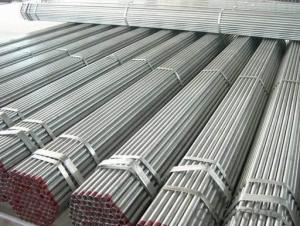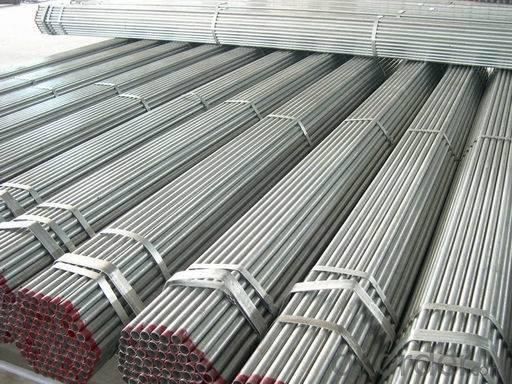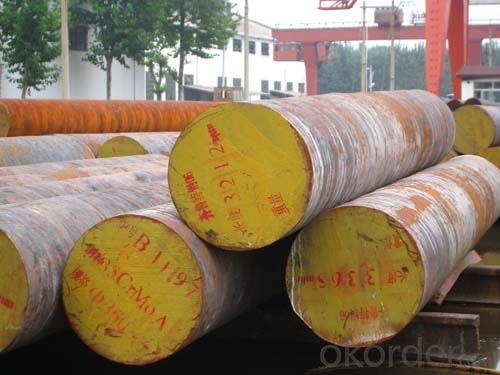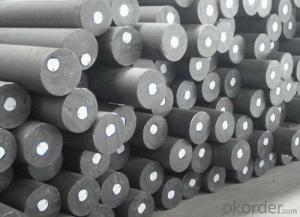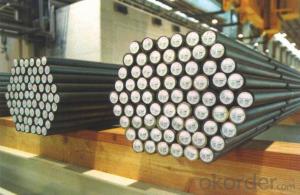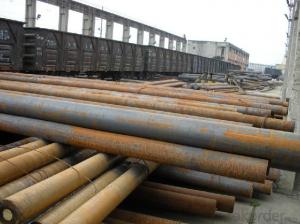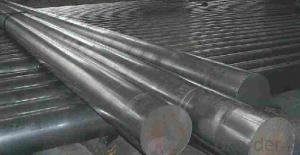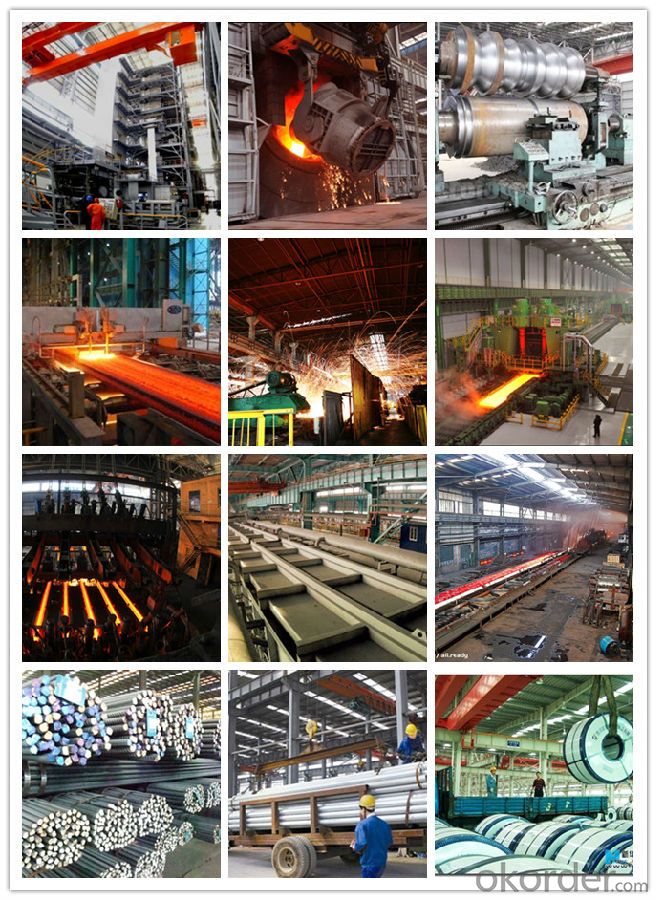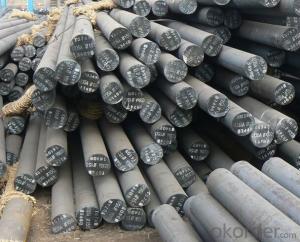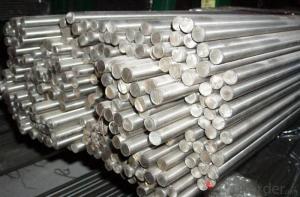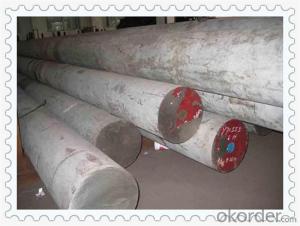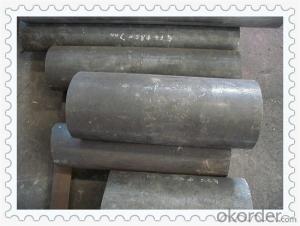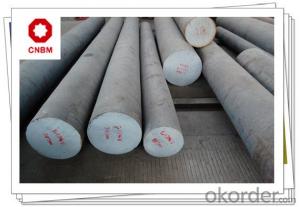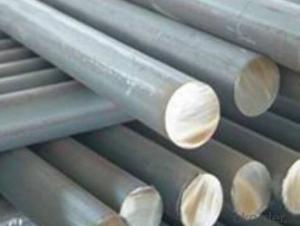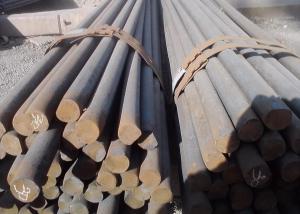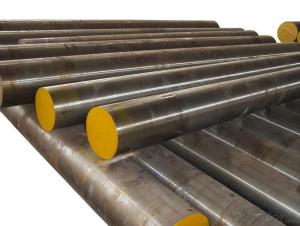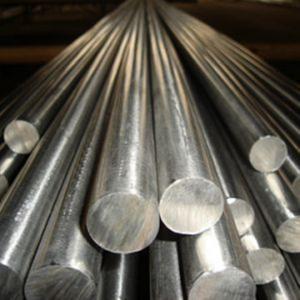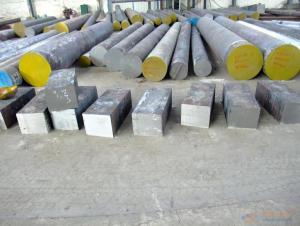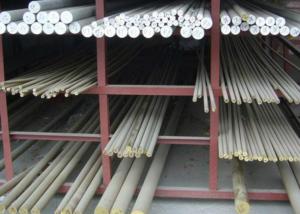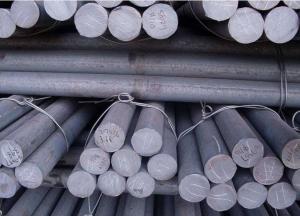Aisi 4140/42crmo4 Alloy Steel Round Bars
- Loading Port:
- China main port
- Payment Terms:
- TT or LC
- Min Order Qty:
- 25 m.t.
- Supply Capability:
- 10000 m.t./month
OKorder Service Pledge
OKorder Financial Service
You Might Also Like
Specification
Chemical composition in %:
C | Si | Mn | Cr | Mo | S |
0,38-0,45 | 0,10,0,40 | 0,60,0,90 | 0,90,1,20 | 0,15-0,30 | 0,020,0,040 |
Steel properties:
Grade of very common use, similar to 34 Cr Mo S 4, Cr Mp S 4, Steel grade 42 Cr Mo S 4 enables 100 MPa more to be achieved on the same sections than steel grade 34 Cr Mo S 4. Sometims used after surface hardening treatment.
Applications:
Parts for powertrain, shafts, press columns, axles of hydraulic jacks, pinions, annular gears,, bolting and screw rods for oil industry.
Mechanical properties:
Condition as supplied, annealed
Hardness: < 241 HB
condition as supplied, hardened and tempered
Ø | U.T.S. | Y.S.0.2% | Elongation | Elongation |
d < 16 | 1000-1300 | > 900 | > 10 | > 30 |
16 < 40 | 1000-1300 | > 750 | > 11 | > 35 |
40 < d < 100 | 900-1100 | > 650 | > 12 | > 35 |
100 < d < 160 | 800-950 | > 550 | > 13 | > 35 |
160 < d < 750 | 750-900 | > 500 | > 14 | > 35 |
250 < d < 500* | 690-840 | > 460 | > 15 | > 38** |
500 < d < 750* | 590-740 | > 390 | > 16 | > 38** |
Workshop show
Product show
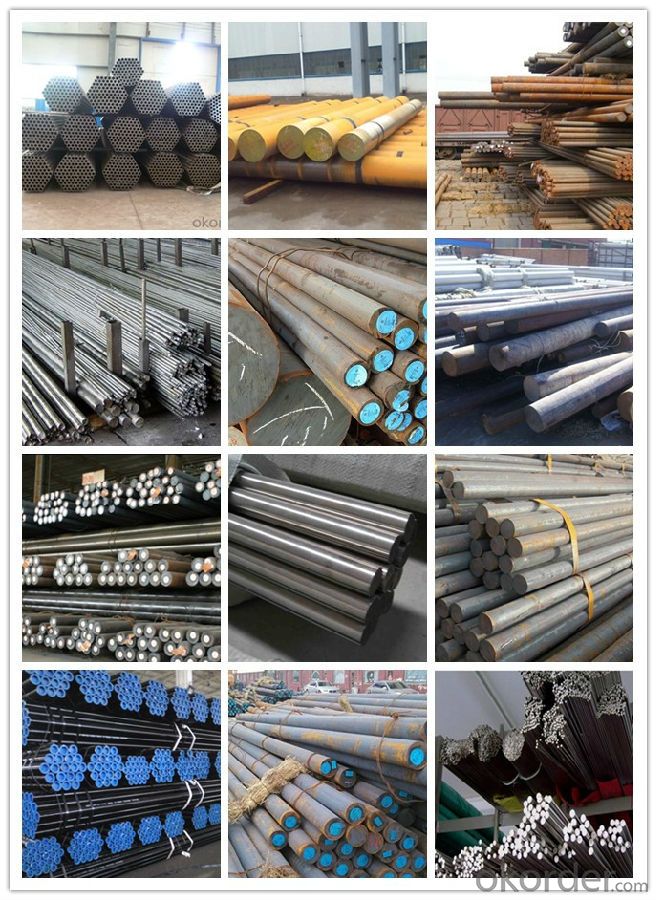
- Q: How is special steel machined?
- Special steel is machined using various methods and techniques, depending on the specific requirements and properties of the steel. One common method is turning, where a cutting tool is used to remove material from the rotating steel workpiece. This process is used to shape the steel and create cylindrical parts such as shafts or rods. Another method is milling, which involves using rotating multi-point cutting tools to remove material from the steel workpiece. This process is used to create flat surfaces, slots, or complex shapes on the steel. Grinding is also commonly used to machine special steel. It involves using abrasive wheels to remove material and create a smooth surface finish. This method is often used for precision machining, where tight tolerances and smooth finishes are required. Drilling is another important machining process for special steel. It involves using a rotating drill bit to create holes in the steel workpiece. This process can be done manually or using CNC (Computer Numerical Control) machines for precise and accurate hole placement. In addition to these methods, special steel can also be machined using other techniques such as broaching, honing, or lapping, depending on the specific requirements and desired outcome. It is important to note that machining special steel requires specialized tools, equipment, and expertise due to the material's hardness and unique properties. The cutting tools used for machining special steel are often made from high-speed steel or carbide, which can withstand the high temperatures and pressures generated during the machining process. Overall, machining special steel involves a combination of cutting, grinding, and drilling techniques to shape, refine, and finish the steel workpiece according to the desired specifications and requirements.
- Q: How does special steel contribute to the power generation industry?
- Special steel plays a crucial role in the power generation industry by offering high strength, durability, and resistance to extreme temperatures and corrosive environments. It is used in the construction of power plant components such as turbines, generators, boilers, and heat exchangers, ensuring efficient and reliable operation. Additionally, special steel enables the development of advanced technologies such as supercritical and ultra-supercritical power plants, which enhance energy efficiency and reduce emissions, contributing to a more sustainable power generation.
- Q: What are the different types of corrosion-resistant steel?
- There are several types of corrosion-resistant steel, including stainless steel, weathering steel, and galvanized steel. Stainless steel is the most common type, known for its high resistance to corrosion due to the presence of chromium. Weathering steel forms a protective rust-like layer, providing long-term corrosion resistance. Galvanized steel is coated with a layer of zinc, which acts as a barrier against corrosion.
- Q: What are the future prospects for the special steel industry?
- The future prospects for the special steel industry are promising. With advancements in technology, increasing demand for high-performance materials in various sectors such as automotive, aerospace, and construction, the special steel industry is expected to witness steady growth. Additionally, the shift towards sustainable and lightweight materials in industries like renewable energy and electric vehicles presents new opportunities for the special steel industry. However, the industry may face challenges in terms of environmental regulations and competition from alternative materials. Overall, the future outlook for the special steel industry looks favorable, driven by technological advancements and evolving market demands.
- Q: Can special steel be used in the production of artistic sculptures?
- Yes, special steel can be used in the production of artistic sculptures. Special steel is known for its strength, durability, and versatility, making it an ideal material for creating intricate and large-scale sculptures. Its unique properties allow artists to explore various forms, textures, and designs while ensuring the longevity of the artwork. Additionally, special steel can be easily manipulated and welded, allowing artists to bring their creative visions to life with precision and stability.
- Q: How does special steel compare to other materials like aluminum or titanium?
- Special steel, such as stainless steel or tool steel, offers several advantages over materials like aluminum or titanium. Firstly, special steel generally exhibits higher strength and hardness, making it ideal for applications requiring durability and resistance to wear. Secondly, special steel possesses excellent thermal conductivity, allowing it to dissipate heat more efficiently compared to aluminum or titanium. Additionally, special steel is often more cost-effective and readily available in comparison to titanium. However, aluminum and titanium are known for their lightweight properties, making them preferable for applications where weight reduction is crucial. Ultimately, the choice between special steel, aluminum, or titanium depends on the specific requirements and constraints of the intended application.
- Q: How is special steel used in the defense industry?
- Special steel is used in the defense industry for various applications such as manufacturing armored vehicles, aircraft carriers, submarines, and military-grade firearms. Its exceptional strength, durability, and resistance to high temperatures make it ideal for constructing critical components and structures that require enhanced protection and performance in combat situations.
- Q: What are the requirements for special steel used in industrial equipment manufacturing?
- To ensure the suitability of special steel for use in demanding applications in industrial equipment manufacturing, certain requirements must be met. These requirements include: 1. Exceptional strength: Given the heavy loads that industrial equipment often encounters, special steel must possess superior strength properties to withstand these forces. It should exhibit high levels of yield strength, tensile strength, and hardness to prevent deformation or failure. 2. Resistance to corrosion: Industrial environments are frequently subject to corrosion caused by exposure to chemicals, moisture, or extreme temperature fluctuations. Therefore, special steel used in such applications should possess excellent corrosion resistance to prevent degradation and ensure long-term performance. 3. High resistance to wear: The friction, abrasion, and impact experienced by industrial equipment often lead to significant wear. Consequently, special steel needs to exhibit exceptional wear resistance to maintain its integrity and prevent premature failure. 4. Toughness and resistance to impact: Industrial settings can subject equipment to sudden shocks, impacts, or vibrations. To withstand such events, special steel should demonstrate good toughness and resistance to impact, absorbing energy and resisting fracture or cracking. 5. Ability to withstand high temperatures: Certain industrial processes expose equipment to high temperatures or rapid temperature changes. Special steel must exhibit excellent heat resistance, retaining its strength, hardness, and other mechanical properties even at elevated temperatures. 6. Ease of machining: Special steel used in industrial equipment manufacturing should be easy to machine, facilitating the fabrication process. It should allow for simple cutting, drilling, welding, and other machining operations without excessive tool wear or damage to the material. 7. Dimensional stability: Equipment components must maintain their shape and dimensions under various operating conditions. Special steel needs to exhibit dimensional stability to prevent warping, distortion, or dimensional changes that could impact the performance or assembly of the equipment. By meeting these requirements, special steel used in industrial equipment manufacturing can endure harsh conditions, deliver reliable performance, and have a long service life. Ultimately, this contributes to the overall efficiency and productivity of industrial processes.
- Q: How does special steel perform in high-temperature mechanical fatigue conditions?
- Special steel performs well in high-temperature mechanical fatigue conditions due to its unique composition and properties. It exhibits excellent strength, toughness, and heat resistance, enabling it to withstand cyclic loading and high temperatures without experiencing significant degradation or failure. The special steel's exceptional performance in such conditions makes it an ideal choice for applications that involve continuous exposure to elevated temperatures and mechanical stresses, ensuring long-term reliability and durability.
- Q: What are the different methods for improving the wear resistance of special steel?
- Enhancing the wear resistance of special steel can be achieved through several methods. These methods encompass: 1. Alloying: Incorporating specific alloying elements, such as chromium, vanadium, or molybdenum, into the steel composition significantly enhances wear resistance. These elements form carbides within the steel matrix, increasing hardness and providing resistance against wear. 2. Heat treatment: Various heat treatment processes, including quenching and tempering, can be employed to enhance wear resistance in special steels. Quenching involves rapid cooling from high temperatures to increase hardness, while tempering reduces internal stresses and improves toughness. 3. Surface coatings: The application of specialized coatings onto the steel surface greatly improves wear resistance. Methods like thermal spray coating, electroplating, and physical vapor deposition create protective layers that resist wear and reduce friction. 4. Shot peening: This mechanical surface treatment involves bombarding the steel surface with small spherical particles at high velocities. The impact induces compressive stress, enhancing the material's resistance to wear and fatigue. 5. Nitriding: Through the diffusion of nitrogen at elevated temperatures, the surface of the steel forms nitrides, significantly increasing surface hardness and wear resistance. 6. Cryogenic treatment: Subjecting the steel to extremely low temperatures induces a structural transformation that enhances wear resistance. This process refines the grain structure and improves the material's toughness. 7. Grain refinement: Employing techniques like severe plastic deformation or specialized casting reduces the grain size of the steel. Smaller grain sizes offer increased hardness and wear resistance by improving dislocation movement and reducing grain-boundary sliding. It is noteworthy that the choice of method for improving wear resistance depends on factors such as specific application, budget, and desired level of improvement. A combination of these methods may also be utilized to achieve optimal wear resistance in special steel.
Send your message to us
Aisi 4140/42crmo4 Alloy Steel Round Bars
- Loading Port:
- China main port
- Payment Terms:
- TT or LC
- Min Order Qty:
- 25 m.t.
- Supply Capability:
- 10000 m.t./month
OKorder Service Pledge
OKorder Financial Service
Similar products
Hot products
Hot Searches
Related keywords
